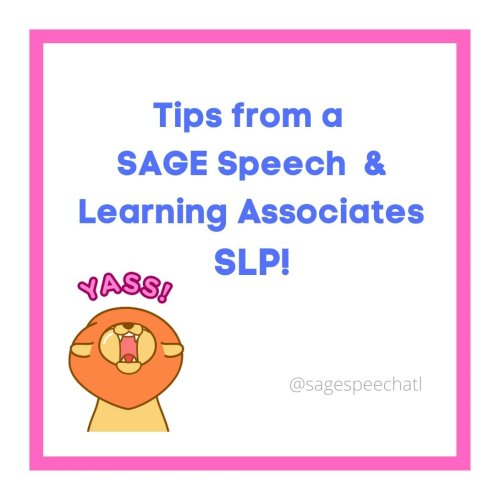Helping Little Voices Grow Big.
Call Us for Speech Therapy in Atlanta
Helping Little Voices Grow Big.
Call Us for Speech Therapy in Atlanta
"¨"¨The body's top priority is breathing, not eating! Eating is a close second, but cannot be completed properly if a child's breathing is impacted. When we swallow food, our airway is briefly closed off to ensure no food enters the lungs. If a child is having difficulty breathing, has enlarged tonsils/adenoids or any other airway obstruction, it can become uncomfortable and downright scary to eat! Long term, this can create an aversion to eating."¨"¨
Actually, eating is both instinctive AND learned! During the first month of life, primitive motor reflexes (rooting, sucking, swallowing) allow children to seek out nutrition. This provides the motor practice a baby needs to learn to eat safely and with skill. Around month 5-6, babies eating becomes a fully learned motor skill. Also around this age, babies become more interested in handling their own food, practicing fine motor skills to pinch and grasp food, play with texture, and learn how and where to place food in their mouth for early chewing."¨"¨
Eating and swallowing are complex behaviors involving volitional and reflexive activities of more than 30 nerves and muscles. They have two crucial biological features: food passage from the oral cavity to stomach and airway protection. The swallowing process is commonly divided into oral, pharyngeal, and esophageal stages according to the location of the bolus. The movement of the food in the oral cavity and to the oropharynx differs between eating solid food and drinking liquid. Plus, eating is the only task children do which requires simultaneous coordination of all 8 of our sensory systems. Eating is a LOT of work! It is not atypical for a child to need help in the skill of eating. Call SAGE to inquire about feeding therapy for your child! "¨"¨Call SAGE to inquire about feeding therapy for your child! "¨

At SAGE Speech & Learning Associates, we know that the best care for our clients comes from a collaborative approach. This…
Read More
At SAGE Speech & Learning Associates, we believe that early intervention is key when it comes to speech and language development,…
Read More
At SAGE Speech & Learning Associates, we are committed to providing personalized and specialized care for every child we serve. We…
Read More
Exploring the Benefits of Speech Generating Devices in Speech Therapy: Insights…
Read More
Has your school considered engaging SAGE Speech & Learning Associates? At SAGE Speech & Learning Associates, we recognize the vital role…
Read More
Fingers crossed, but it seems it that 2021 is shaping up to be a much better school year than 2020. We…
Read More
A Letter From Founder Saren Schapiro M.Sc., CCC-SLP Dear Colleagues, As the year rounds into the second quarter, I am touching…
Read More
Hello Clients and Friends, I want to thank you for being a part of our team in 2020. To have made…
Read More
Discuss with the child out loud/verbally what's coming next--"First we do this, then this, then this, then done/lunch/play/etc" Bundle-up…
Read More
This is a question we never imagined we would have to answer. SAGE Speech & Learning has pivoted to teletherapy services…
Read More